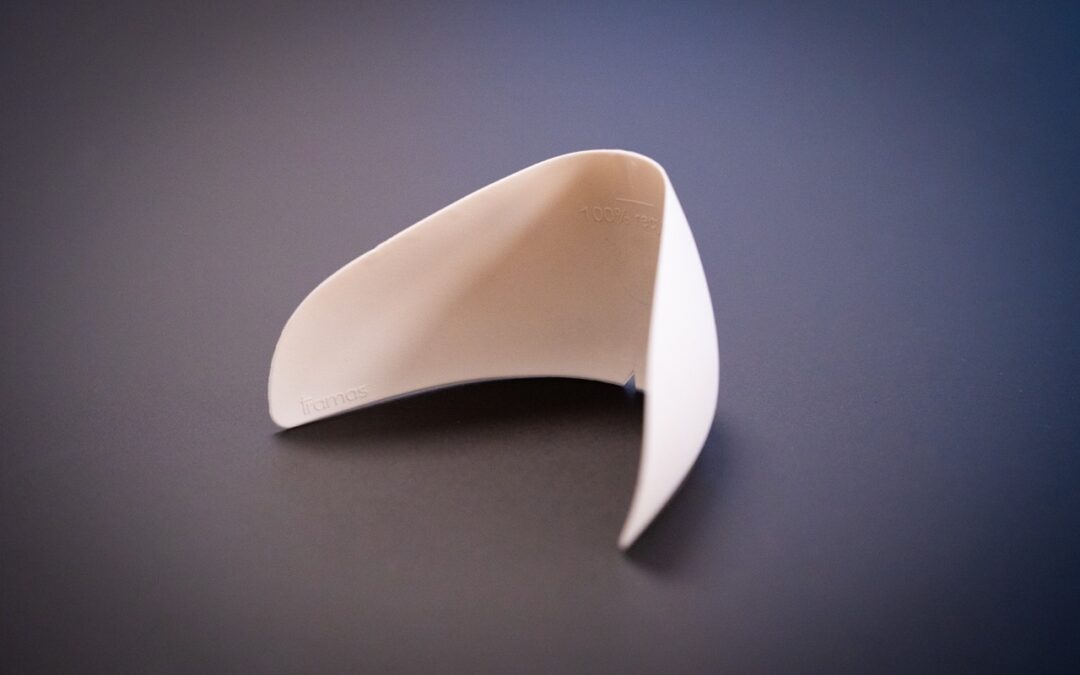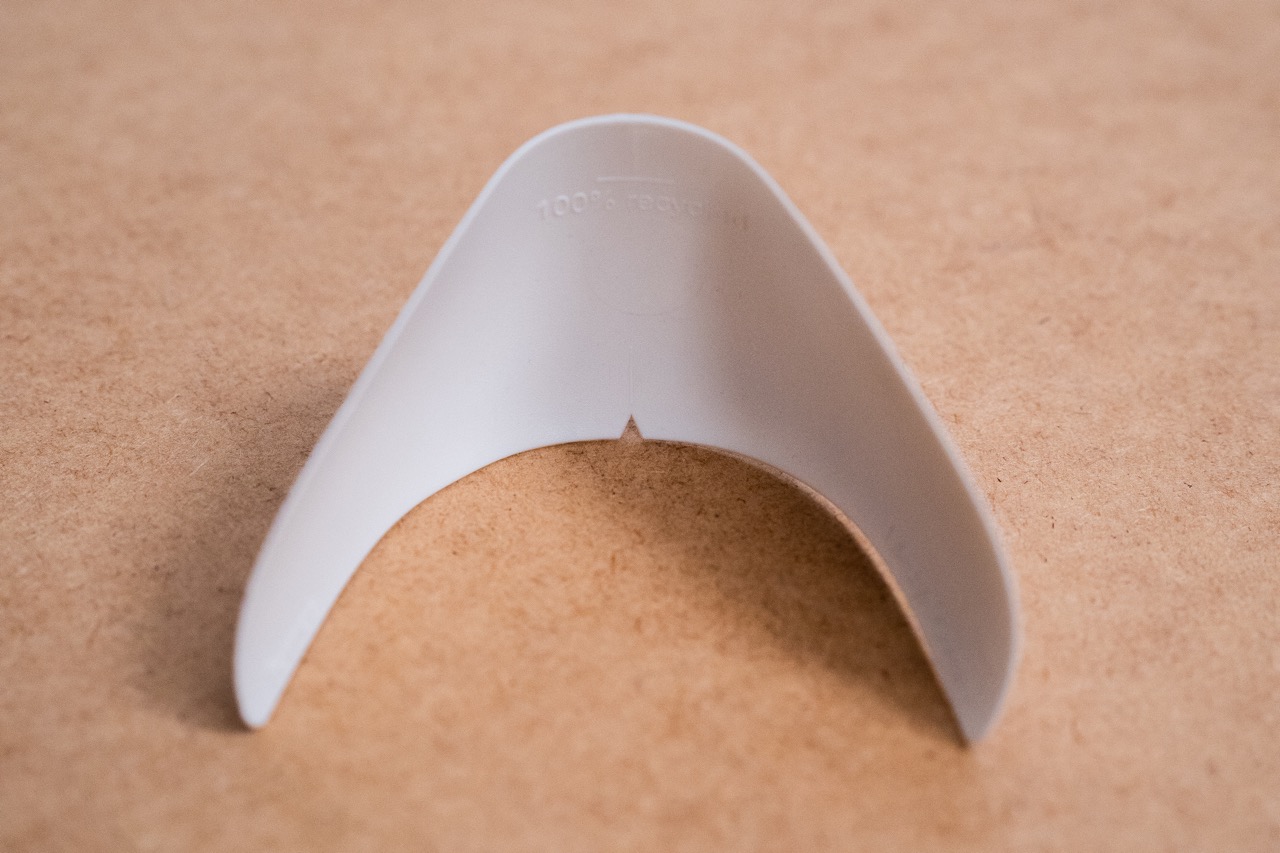
The Heel Counter
The Heel Counter
23.11.2022 · Expert Sascha Berger / Editor Luisa-Maria MrcelaWhat is a heel counter?
An internal heel counter is a non-visible shoe component placed in the back of the shoe to stabilize and tighten the back of the heel that shapes around the Achilles tendon of your foot. Accordingly, internal heel counters are used throughout most footwear categories fulfilling several functions. It should protect the heel from injuries, ensure a stable heel support, guarantee a comfortable wear feeling, and fit perfectly to the heel shape.
Navigation
Strobel vs. AGO
Heel Counter vs. Thermo-Sheets
Heel counter material
Sustainability
History framaprene


Strobel vs. AGO
Depending on the manufacturing process, there are two types of heel counters. Experts on the field, call heel counters either “AGO” or “Strobel”. At first glance, AGO and Strobel heel counters seem to be quite the same. However, a tiny construction element makes the difference.
The decisive criteria which differentiates an AGO from another type of heel counter is that the AGO has a flange. The flange is a small extending element on the bottom of the heel counter. In collaboration with the 3D shape of a heel counter, it provides extra stability, and most importantly it ensures the perfect fit on the heel during the manufacturing process.
The name AGO comes from the manufacturing method AGO (Another Great Opportunity), invented by the Milanese tanner Francesco Rampichini in 1911, in which this type of heel counter is used. To construct the shoe in the AGO method, first the heel counter is glued into an opened upper element (without insole). Subsequently, the upper is mounted on a shoe last, which is already prepared with an insole. The sealing is then made by gluing or pinching the lasted upper to the bottom of the insole. During the whole mounting and sealing process, the AGO heel counter’s flange prevents it from moving away from its perfect heel position.
Heel counters without a flange are called Strobel. They are suitable for e.g., a Strobel construction, which is the most common manufacturing method in the sport shoes industry. The Strobel method requires specialized machines. The name Strobel has its origin from the company with the same name, which invented this type of footwear manufacturing. Differing from the AGO method, the stabilization and fit of the heel counter only comes from the perfect adaptation of the 3D heel counter to the shoe last.
In this method, the upper is already prepared with a glued (or sometimes even stitched) heel counter inside. Before even mounting it to the last, the upper is already connected and sealed to the so-called “Strobel board”. A Strobel board is much narrower and thinner compared to insoles usually used in the AGO method. The stitch sealing of upper, Strobel board, and heel counter can be imaged with the look of a sock.
Because extending heel counter flanges would collide with the stitches of the Strobel connection, a Strobel heel counter does not have any flanges.
In many footwear categories the Ago and Strobel methods are merging. Some shoes are often manufactured with the Strobel method on the heel part of the foot (remember: stitches) and with the AGO method on the front foot. Logically, the method used for the heel part holds sway over the choice of heel counter type.

Strobel

AGO
Heel Counter vs. Thermo-Sheets
Both heel counters and thermo-sheets are functional elements located on the heel of a shoe. As the names already tell, heel counters and thermo-sheets are not the same. What is the difference again? Don’t heel counters and thermo-sheets have the same purposes of protection, stability, and fit? Yes, both are aiming for all three criteria, but when viewed from the functional perspective, heel counters perform better:
Thermo-Sheets are die-cut 2D counters which are leveled to the last shape via heat and pressure.
Heel counters are injection molded and have a 3D shape. The fact that heel counters can be designed in perfect accordance with the shape of the shoe last (based on which a shoe is manufactured) ensures a superior fit over 2D thermo-sheets.
Still, there are advantages of thermo-sheets, making them attractive: cost effectiveness and flexibility. The construction of a thermo-sheet tooling (cutting die) costs less than a heel counter mold, and is herewith more flexible when it comes to design changes. Therefore, thermo-sheets usually have a lower unit price.
Even though price competitiveness, which is one of the most important criteria of the footwear industry, is unchanged, surprisingly an increasing quantity of thermo-sheets has recently been replaced by heel counters.
Here is why:
On the one hand, sustainability aspects are gaining importance, and the production of thermo-sheets has an unavoidable flaw: the process of die-cutting and skiving accrues waste. Opposed to that heel counters are injection molded and therefore produce less waste. Moreover, can consist of up to 100% recycled material, whereas most thermo-sheets only contain a relatively small share of recycled ingredients.
On the other hand, new design and manufacturing concepts of heel counters enable a competitive price compared to thermo-sheets.
Generally speaking, thermo-sheets are preferably used for casual footwear, where the component price is usually a more important criterion. In high performance footwear categories, where high resistant protection, strong heel support, good fit, and advanced wearing comfort is required heel counters are in use.
Heel Counter Material
framas Heel counters are made from 100% recycled raw materials. The hard component is recycled Polystyrene and the soft component recycled SBS (resp. TPR = Thermoplastic Rubber). By compounding the soft and the hard material components in different ratios, framas currently offers 3 fully sustainable heel counter compounds.
-
framaprene ECO R100 87A
Soft -
framaprene ECO R100 95A
Standard · Used for around 70% of all applications -
framaprene ECO R100 55D
Hard · Specialty grade used for casual applications
Material Components
Styrene-Butadiene-Styrene Soft Component
Reprocessed single-source post-industrial waste from the sanitary products industry (foil extrusion).
This source ensures stable mechanical properties comparable to virgin SBS grades and enables our fully sustainable compounds to be used even for performance applications.
High Impact PolyStyrene Hard Component
Reprocessed post-consumer and post-industrial waste (consumer electronics and food packaging) from constant sources in Japan.
Since the replacement of the virgin polystyrene in 2013, the weight of recycled HIPS has reached up more than 8,500 tons until today.
Sustainability
Every year around hundreds of millions of shoes are produced. Since heel counters can be found in almost all of them, their impact on the environment is considerable high.
framas group is currently producing more than 100 million heel counters per year which requires around 2,500 tons of raw material.
Considering that framas heel counters are made of 100% recycled raw materials, the material-related carbon footprint was reduced by more than 90% (> 7,500 tons of carbon per year) compared to the usage of virgin materials.
For next generation compounds framas is currently investigating bio-based and bio-degradable options and also target to reduce the carbon missions caused by the logistics (trucking, shipping) in the entire supply chain for heel counter materials.
History framaprene
Having expertise in last-making since 1948, framas produced the first complementary heel counters in the late 1970s. Since then, more than 90 heel counter series have been developed, some of them being produced for more than 40 years.
In 2009, framas founded an R&D project in cooperation with the University of Applied Sciences in Kaiserslautern, Germany targeting to develop a well performing heel counter compound partly based on recycled ingredients.
As a result, the framaprene ECO grades were introduced, containing more than 50% recycled Polystyrene. After intensive product testing and material evaluation, those grades were officially approved and launched in mass-production in 2013, reducing the usage of virgin materials in specific products by more than 1,000 tons per year.
In 2017, the first R&D trials with the recycled SBS (soft component) were initiated with the target to finally provide a fully sustainable heel counter compound.
The first 100% recycled framaprene grade was introduced in 2019 but it took another 18 months to establish a solid vendor base to guarantee a safe R-SBS supply of sufficient quantity and reliable quality.
From the middle of 2021, after almost 12 years of continuous progress, framas Group can cover an annual production quantity of more than 100 million pairs exclusively based on recycled ingredients, reducing material related carbon emissions by more than 90% compared to the usage of virgin raw materials. A GRS certification is currently under process and will be finalized until spring 2023.
If you liked this article, make sure to follow our Social Media channels. You can contact us anytime via LinkedIn, Instagram & Facebook. We are happy to receive any feedback and tell us what other topics are of interest to you. We will try to address them in the near future.
Thanks for checking out our blog!

Neueste Kommentare